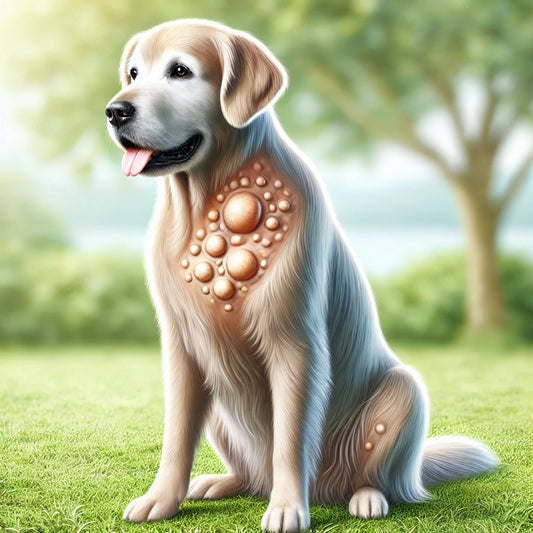blog

Bumps on a Dog’s Anus: What You Need to Know
Discovering a bump on your dog’s anus can be alarming, but it’s not uncommon. While some bumps are harmless, others may require medical attention. Knowing the possible causes, symptoms, and...
Bumps on a Dog’s Anus: What You Need to Know
Discovering a bump on your dog’s anus can be alarming, but it’s not uncommon. While some bumps are harmless, others may require medical attention. Knowing the possible causes, symptoms, and...

Indolent Lymphoma in Dogs: Understanding a Slow...
Indolent lymphoma in dogs is a unique form of cancer that progresses slowly, making it different from the more aggressive types of lymphoma commonly seen in veterinary medicine. While this...
Indolent Lymphoma in Dogs: Understanding a Slow...
Indolent lymphoma in dogs is a unique form of cancer that progresses slowly, making it different from the more aggressive types of lymphoma commonly seen in veterinary medicine. While this...

The Science Behind Dog Tumors: Benign vs. Malig...
The word “tumor” strikes fear into the hearts of many dog owners. However, not all tumors are cancerous. Understanding the difference between benign and malignant growths is crucial for making...
The Science Behind Dog Tumors: Benign vs. Malig...
The word “tumor” strikes fear into the hearts of many dog owners. However, not all tumors are cancerous. Understanding the difference between benign and malignant growths is crucial for making...

The Emotional Journey of Caring for a Dog with ...
When a beloved dog receives a cancer diagnosis, it can feel like the world stops. As more pet owners encounter this reality, the conversation around emotional resilience and compassionate care...
The Emotional Journey of Caring for a Dog with ...
When a beloved dog receives a cancer diagnosis, it can feel like the world stops. As more pet owners encounter this reality, the conversation around emotional resilience and compassionate care...

Understanding Dog Spinal Tumors: Symptoms, Diag...
Spinal tumors in dogs are rare but serious conditions that can significantly impact a dog's mobility and quality of life. These tumors can be either primary (originating in the spine)...
Understanding Dog Spinal Tumors: Symptoms, Diag...
Spinal tumors in dogs are rare but serious conditions that can significantly impact a dog's mobility and quality of life. These tumors can be either primary (originating in the spine)...

Quinoa for Dogs with Cancer: A Nutritional Powe...
When it comes to supporting a dog diagnosed with cancer, nutrition plays a crucial role in enhancing their quality of life and overall well-being. Quinoa, often referred to as a...
Quinoa for Dogs with Cancer: A Nutritional Powe...
When it comes to supporting a dog diagnosed with cancer, nutrition plays a crucial role in enhancing their quality of life and overall well-being. Quinoa, often referred to as a...
